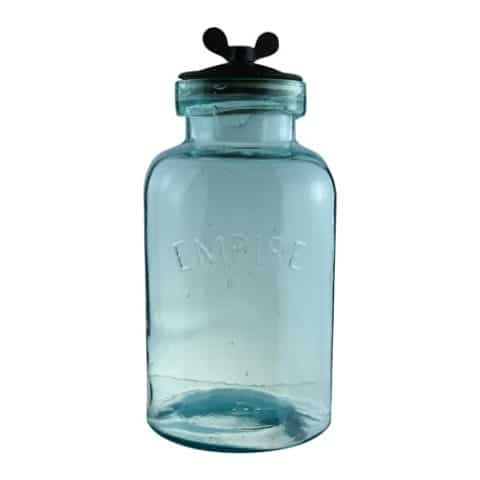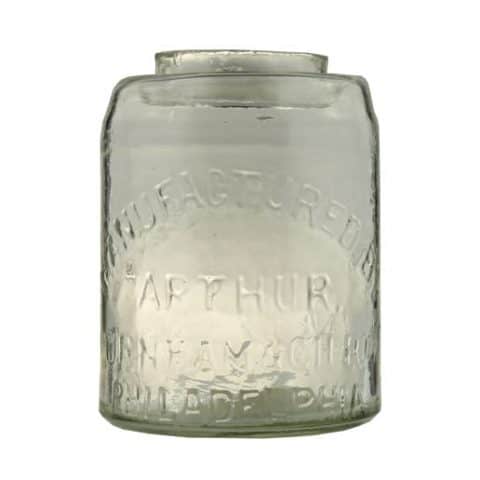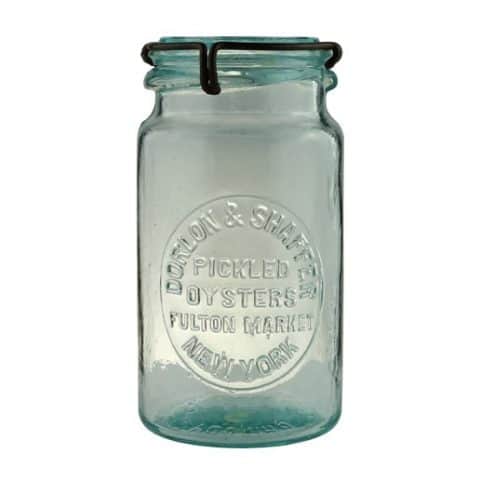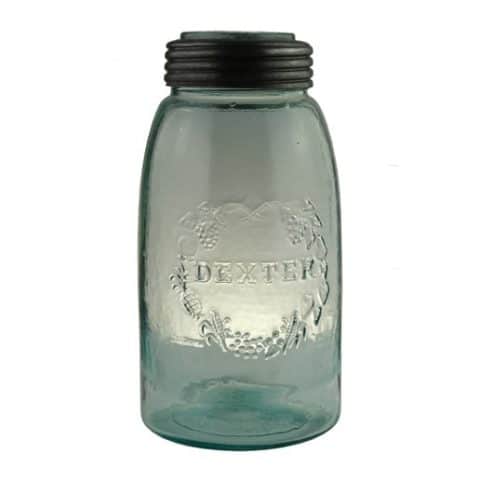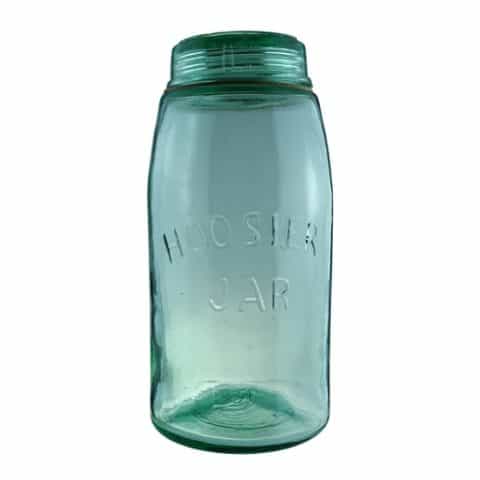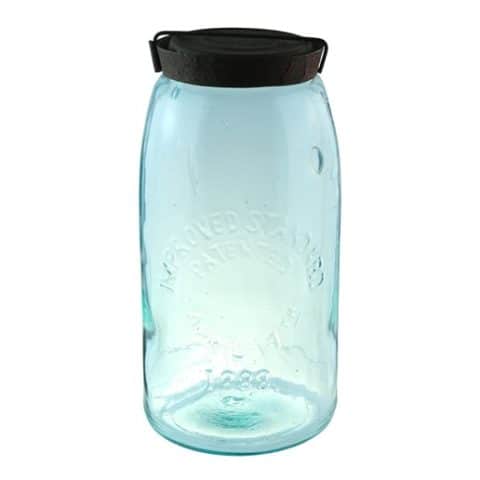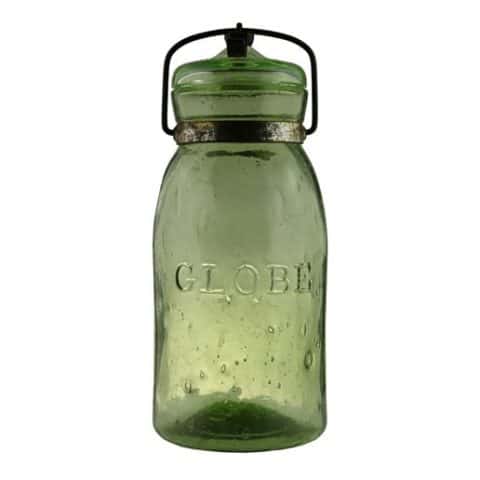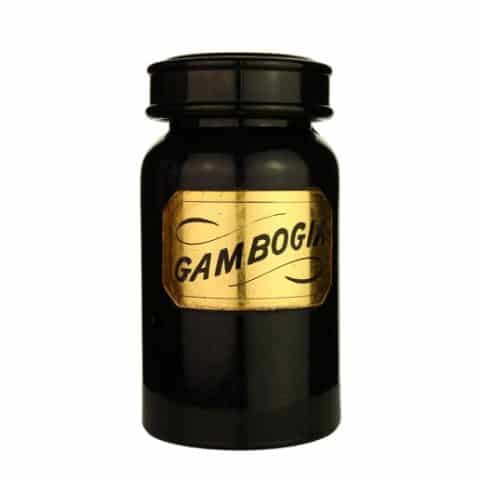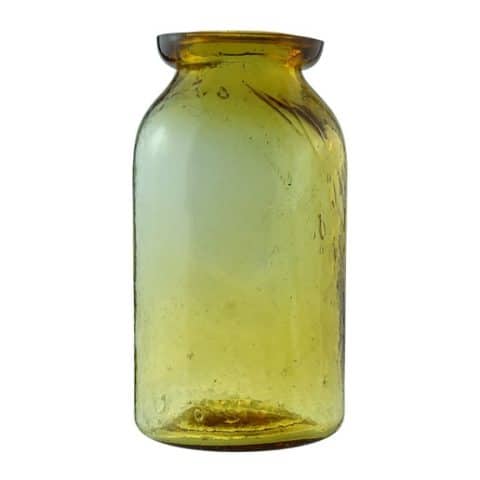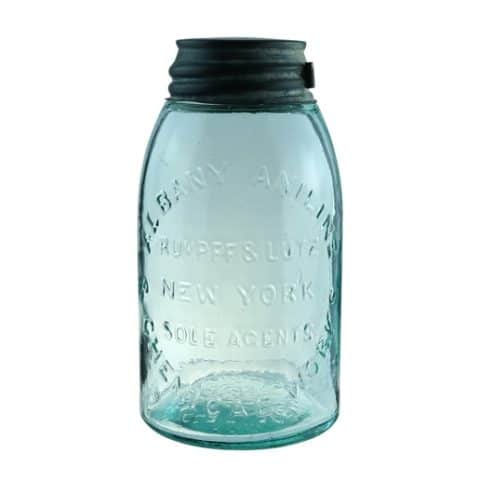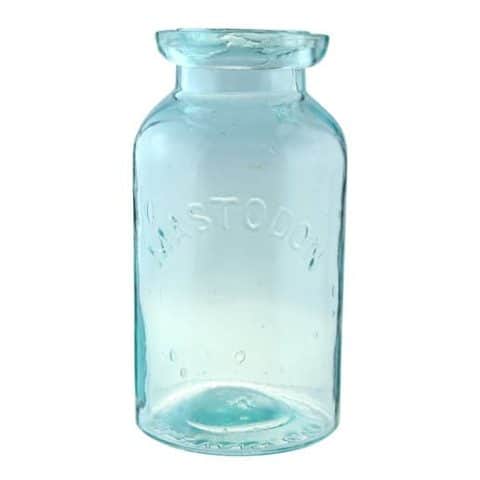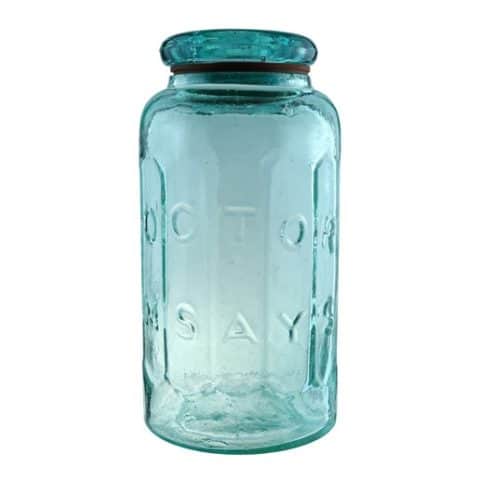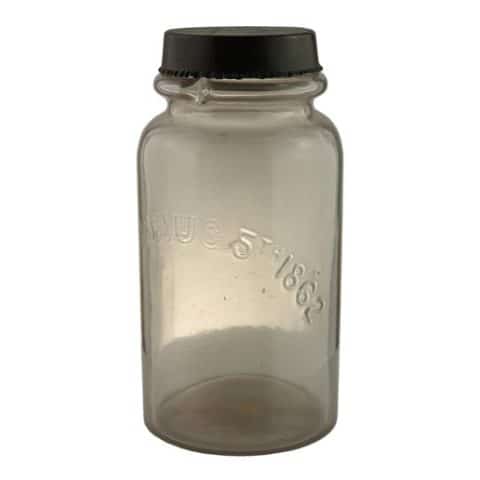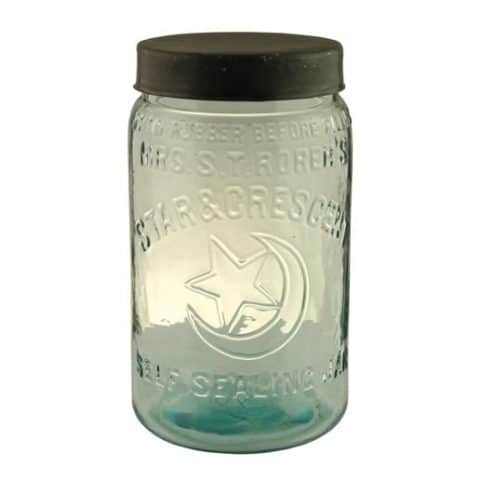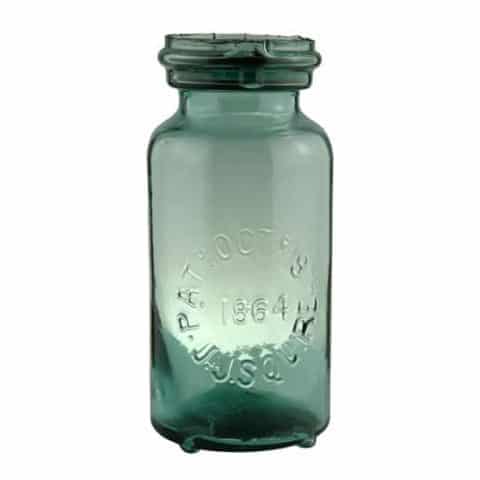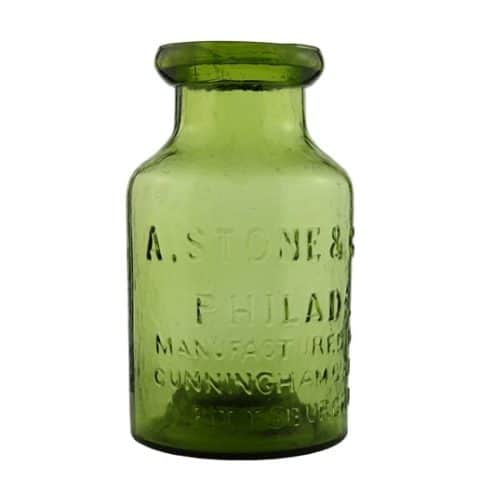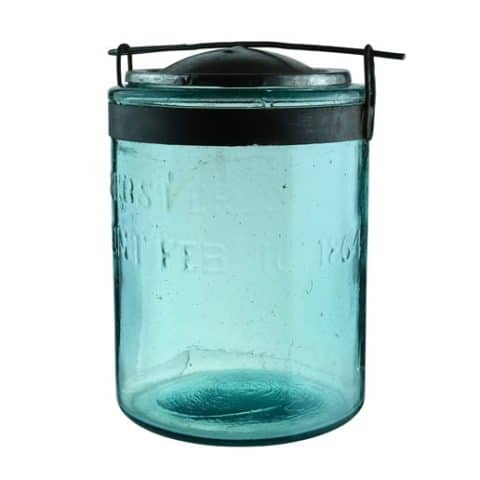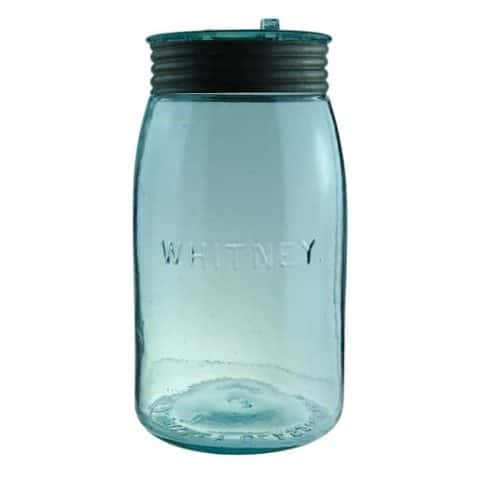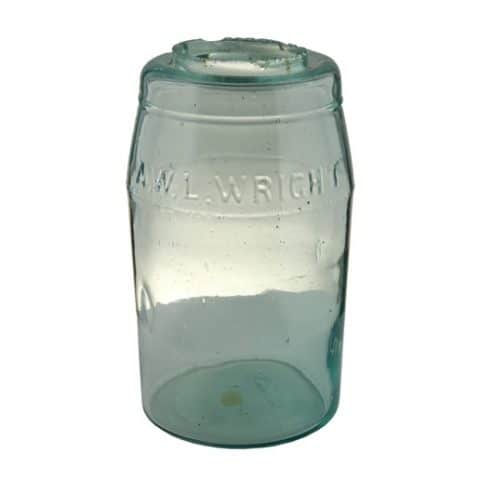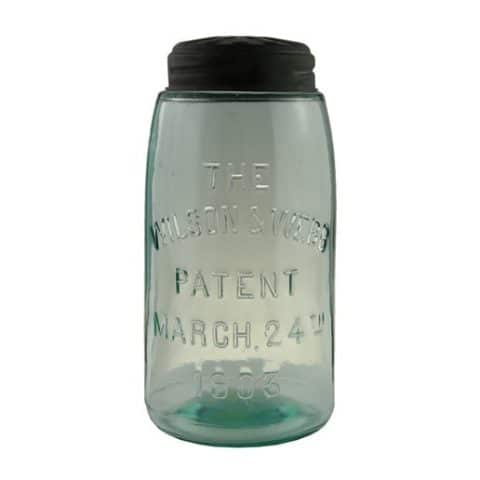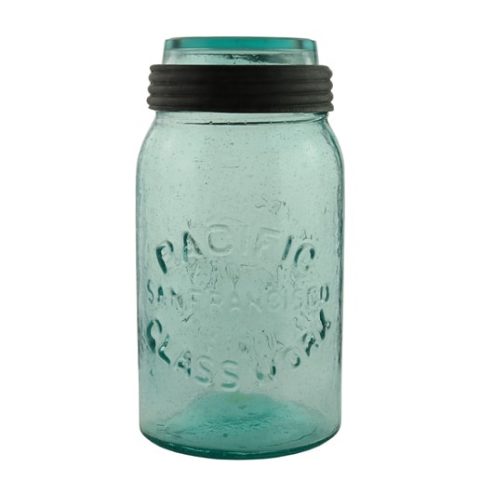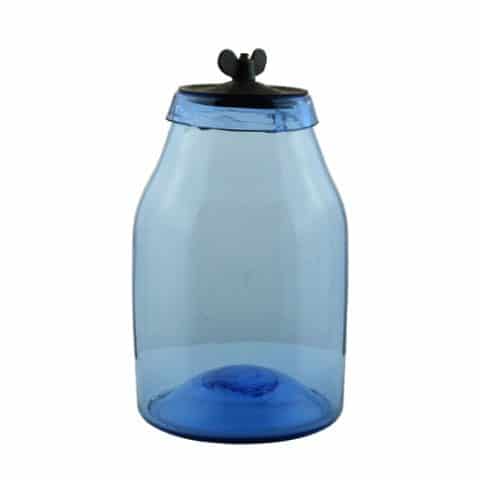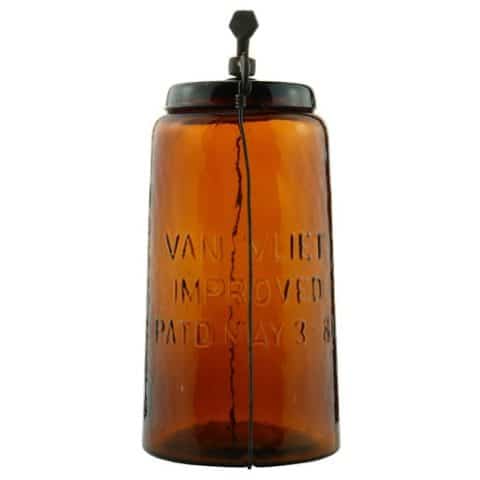American Improved Preserve Can – Earle’s Patent Feb. 2d 1864 (Stars/Anchor)
American Improved Preserve Can
Earle’s Patent Feb. 2d 1864
(Embossed Stars)
Possibly Lyndeborough Glass Works
Lyndeborough, New Hampshire
Aquamarine Quart
Provenance: Phil Smith Collection

Present thinking is that Lyndeborough Glass Co. in New Hampshire produced our “American Improved Preserve Can” jar based on similarities between a “National Butter Can” jar discovered on the site of the old glassworks. The patent, terminology, and shape of the finish make Lyndeborough a logical choice.
The Lyndeborough Glass Co. opened in 1867 in Lyndeborough, New Hampshire. Although the operating firm had formed a year earlier. The plant remained in business for almost two decades, closing in 1886. The glassworks apparently reopened as the Crystal Glass Co. for two more years. As with most glass houses during that period, the factory rarely marked its goods, although you can sometimes find their “L.G.CO.” monogram on the bases of flasks and patented glass jars.
Lyndeborough most likely made a small variety of fruit and product jars that are similar to our American Improved Preserve Can . All of these jars were made based on Timothy Earle patents. Lyndeborough also made Hero jars and advertised them in the Boston Post in 1869 and 1870.

Our museum example “American Improved Preserve Can” (ca. 1864-1865) is a mouth-blown quart jar that is embossed ‘AMERICAN (arch) / IMPROVED (horizontal) / PRESERVE CAN (inverted arch)’ on one side and ‘EARLE’S PATENT (arch) / {ring of 13 stars around a single larger star} / FEB. 2d 1864 (inverted arch).” The lid is unmarked and made of glass. The jar is hand blown with a ground lip. The closure is a top seal (on ground lip), glass lid held down by cast iron yoke clamp having a spring activated plunger. The patentee was Timothy Earle of Valley Falls Rhode Island. The jar is extremely rare.
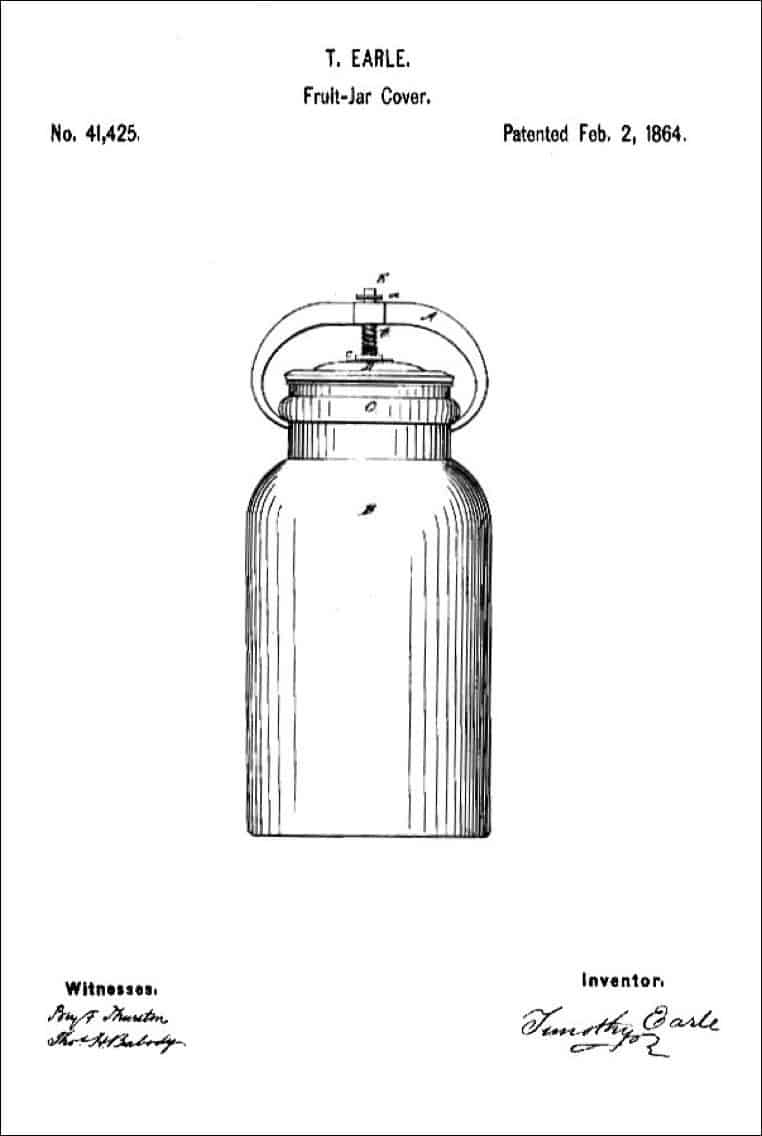

The similar “National Butter Can” (ca. 1864-1865) is embossed ‘NATIONAL (arch) / {shield} / BUTTER CAN (inverted arch)’ on one side with a large anchor on the other. The jar has no shoulders and has only one side seam. Just how the jar was blown is uncertain. The single jar known was dug at the Lyndeborough Glass Co. site and has markings similar to any of the Earle patent jars. The jar was made to the February 2, 1864, patent (No. 41,425) issued to Timothy Earle of Valley Falls, Rhode Island. One rare example base appears to have had a glass-tipped solid bare iron pontil scar which was fire-polished away.
The “National Preserve Can” (ca. 1864-1865) is similar to the “National Butter Can” and was most likely produced at Lyndeborough. The jar is embossed ‘NATIONAL (arch) / {shield} / PRESERVE CAN (inverted arch)’ on one side and “EARLE’S PATENT (arch) / {anchor} / FEB 2ND 1864 (inverted arch)’ on the other. Timothy Earle obtained patents for venting devices on Nov. 10 and Dec. 22, 1863.” Creswick illustrated the jar and lid, and based on the similarity of the terminology, the virtually identical shield, and the relation of the finish shapes, stated that Lyndeborough was most likely the manufacturer.
Lastly, the “Improved Mercantile Fruit Jar” (ca. 1865-1866) is another similar jar that is embossed “IMPROVED (arch) / MERCANTILE (horizontal) /FRUIT JAR (inverted arch)” on one side and “EARLE’S PATENT (arch) / {ring of 13 stars around an anchor} / DEC 22. 1863 (inverted arch)” with two curved lines through the patent date on the other. Lyndeborough is also considered the manufacturer. Creswick illustrated the jar and lid, showing that the glass closure was embossed ‘EARL’S PATENT FEB 2D 1864 & MAR 21ST 1865’ in a circle. She noted that “the lid variation on this scarce jar is particularly rare as it will not fit on other jars in this series, such as the National Preserve Can, etc.” Creswick mentioned three Earle patents: Earle 1863 patent December 22, 1863 (No. 40,996) “Improvement in Covers for Fruit-Cans,” February 2, 1864 (No. 41,425) “Improvement in Closing Preserve-Cans,” and March 21, 1865 (No. 46,887) “Improvement in Preserve- Jars.”
Earle never assigned any of his patents to a company, suggesting that he was an independent inventor. All three of the patents adapted to the jars possibly made by Lyndeborough used essentially the same configuration with some refinements in the latter two.
Timothy Earle obtained several other patents. On November 10, 1863, he had received Patent No. 40,556 for an “Improvement in Preserve-Cans, Jars.” This was the design that he eventually refined into the 1864 patent. He also patented an “Improvement in a Fruit-Jar” (No. 45,594) later that year, on December 27. This closure design, however, was apparently never used. The March 1865 patent was again a refinement of the 1863 and 1864 designs. On June 28, 1870, the patent office granted Earle Patent No. 104,839 for an “Improvement in Fruit-Jars”—a barrel-shaped design that was also probably never used. Earle also obtained several other patents for non-glass items, including an oil can with a basal button to squirt the oil (Patent No. 230,760 on August 3, 1880) and three patents for eggbeaters.
Primary Image: The American Improved Preserve Can aquamarine quart imaged on location by Alan DeMaison, FOHBC Virtual Museum Midwest Studio.
Support: Reference to Lyndeborough Glass Co. by Bill Lockhart, Barry Bernas, Beau Schriever, Bill Lindsey, and Carol Serr
Support: Reference to Red Book No. 12, the Collector’s Guide to Old Fruit Jars by Douglas M. Leybourne, Jr. Access and use of Creswick illustrations granted by Doug Leybourne,
Support: Reference to Fruit Jar Annual 2020 – The Guide to Collecting Fruit Jars by Jerome J. McCann
Support Image: Auction Lot 14922: National Preserve Can (Shield) Earles Patent 1864, Quart, Aquamarine, reproduction clamp with replacement unmarked aqua glass lid, shiny glass, shallow chips on the ground mouth, embossing strong, base unmarked, 1860s, rare early jar with great pictorial embossing. – Greg Spurgeon, North American Glass, July 2017
Join the FOHBC: The Virtual Museum is a project of the Federation of Historical Bottle Collectors (FOHBC). To become a member.













